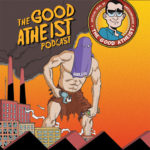After building a makeshift recording setup, I was able to interview Professor of Native Archeology Dean R. Snow to talk about the legend of the Great Peacemaker, the structure of Native society, and how things might have played out differently if not for the European Invasion.
NOTES:
Dr. Dean R. Snow, Professor of Archeology at Penn State. Author of “Archeology of North America”,
Difficulty finding reliable material on the subject that wasn’t marred by attempts to mythologize and aggrandize Native History. Is that fair?.
Part 1: The Great Peacemaker
An attempt is made on his life, by a family relative at a young age
He is persecuted by his own people who do not understand him.
Claims to be speaking on behalf of a greater power to establish new laws and ensure a new peace after a time of strife.
In order to prove his claim, he performs a series of superhuman feats.
Was there an element of Native society that in fact precipitated the spread of illness? Were longhouses inadequate to the task of natural quarantine barriers?
The meaning of Hiawatha or Hayonwhatha, Ha-yon-wha-tha, is “he who seeks his lost mind and knows where to find it,” or possibly a more spiritual rendering might be “he who seeks his ideal and knows where to realize it.”
The Great Peace seems to coincide with Samuel de Champlain’s arrival and subsequent war with the Natives. Was this a civilizing pressure? And external threat they could rally around?
Dr. Snow’s Books:
1. Archeology of Native North America[1]
2. The Iroquois (Peoples of America)[2]
[1]http://www.amazon.com/Archaeology-Native-North-America-Dean/dp/013615686X/ref=sr_1_2?s=books&ie=UTF8&qid=1357943004&sr=1-2
[2] http://www.amazon.com/Iroquois-Peoples-America-Dean-Snow/dp/1557869383

